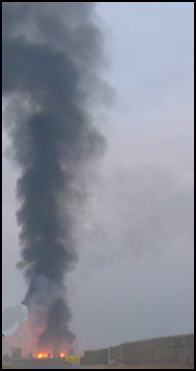
Arthur H. Wilson, National Adjutant of the Disabled American Veterans, sees the group’s mission as educating lawmakers about the disabled veterans’ issues. He says,
Ensuring that this country lives up to its responsibilities is one of the DAV’s primary objectives.
In the March 2010 issue of the DAV Magazine, Thom Wilborn reported on a rather monumental event. The backstory: From 1962 to 1975, 15 different herbicides and defoliants (Agent Orange, etc.) were dumped on Vietnam — millions of gallons of the stuff — and large amounts of these chemicals had found their way into the bodies of Americans. For many years, the government denied any connection between that exposure, and the subsequent health problems suffered by the veterans.
Veterans Administration Secretary Eric K. Shinseki shook things up, and finally they got something called the “presumptive service connection rule.” It said that veterans would receive disability compensation for three conditions that are now accepted to have been caused by the herbicides: Parkinson’s disease, some forms of leukemia, and ischemic heart disease.
Wilborn says,
If they suffer from any of the diseases, it is presumed that their illnesses are service connected, making them eligible for compensation and VA health care. The VA estimates that more than 150,000 veterans will submit claims in the next 12 to 18 months, and 90,000 previously denied claims, including death claims, will be reviewed for possible entitlement to service connection…The price tag for the new presumptions is estimated to be $42.2 billion over the next 10 years.
Needless to say, if thousands of vets started to receive payments for being 60%-100% disabled, that could go a long way toward cutting the numbers of homeless vets. Problem is… nobody’s got 42 billion dollars, except the people who profited from the Vietnam war the first time around, and can now profit from it again when the government borrows from them to pay for things like veterans’ health care and disability compensation.
Anyway, it’s been about 14 months since that story was published, so we looked at the Agent Orange page of the Department of Veterans Affairs website for an update. The most recent Agent Orange newsletter was posted in July 2010. If anybody knows how many of those estimated 150,000 affected veterans have actually applied, and how that’s going, and what’s happening with the 90,000 previously denied claims, it sure would be interesting to know.
The same issue of the DAV Magazine also included an article on a much more recent cause of dioxin exposure for the American troops. On bases in Iraq and Afghanistan, both the Department of Defense and the military contractors Halliburton and KBR customarily maintain burn pits. KBR has even been sued for it. (This outfit also works in the United States as, for example, one of the contractors for the Waller Creek project in Austin, Texas. Wouldn’t it be great if they employed a whole lot of veterans in compensation for having contributed to the disablement of a whole lot of veterans?)
Jet fuel is used to incinerate trash and anything else the military is done with, in giant open-air conflagrations with no filters, scrubbers, or any of the amenities expected of, for instance, a factory in the U.S. Over there, America doesn’t give a damn about the environment or the future health of its own soldiers, either.
The dangers at a base in Iraq were assessed by Air Force Lt. Col. Darrin Curtis, who found that…
… dioxin levels at Balad were 51 times what the military considered acceptable. Similarly, particulate exposure was 50 times higher than was considered acceptable… When the DAV learned of Curtis’ study, its leadership was concerned. Of peak interest was information regarding cancer-causing dioxins that had left thousands upon thousands of deployed troops exposed.
The DAV Magazine piece tells the stories of the typical affected service members and their families: a vet with a brain tumor; a vet who has had 15 surgical procedures and lives on 22 different medications daily; and, of course, a family whose home is being foreclosed. So here is another enormous group of veterans who will be affected forever, and there is a statistical certainty that a great number of them will end up homeless, that is, the ones who aren’t already homeless or dead.
The Disabled American Veterans organization has a very long list of things it wants for its members, in the way of disability compensation, long-term health care, and other benefits. Every year, it has a national convention to decide which legislative goals to work on. The adoption of any or all of these measures could go a long way toward preventing veteran homelessness.
Let’s just pick a few of these items at random, and imagine the impact on veteran homelessness if they moved from the wish list to reality:
* Ensure that priority access and timely, quality health care services are provided to service-connected disabled veterans.
* Ensure proper screening and treatment for traumatic brain injury and post-deployment mental health issues.
* Support increases in grants for automobiles or other conveyances available to certain disabled veterans and to provide for automatic annual adjustments based on the increase in the cost of living.
* Provide an increase in the specially adapted housing grant.
* Extend military commissary and exchange privileges to service-connected disabled veterans.
* Support legislative measures assisting disabled-veteran-owned businesses.
Reactions?
Source: “VA links new illnesses,” DAV Magazine, 11-12/10
Source: “Agent Orange,” publichealth.va.gov
Source: “Burn pits: toxic exposures impact Iraq, Afghanistan veterans, families and survivors,” DAV Magazine, 11-12/10
Source: “DAV’s legislative agenda 2011,” DAV Magazine, 11-12/10
Image by octal (Ryan Lackey), used under its Creative Commons license.


